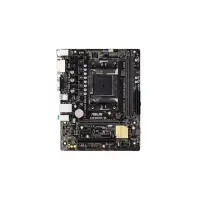Key Of Life
※ Download: Key of life
Almost at the beginning Wonder took a year off from the music market, with a project for a double album to be released in 1976. The earliest known example of a crux ansata comes from a copy of the from the third or early fourth century AD; the adoption of this sign may have been influenced by the staurogram, the ankh, or both.

Still this is a good movie and the switch between Kondo and Sakurai lead to some funny moments and developments. Realizing that he can get away with what he did, Sakurai backs out of his plan to return what he stole to Kondo. The Egyptians wore amulets in daily life as well as placing them in tombs to ensure the well-being of the deceased in the afterlife.

Key Of Life - The three consonants also compose the word for a rope-like object found in illustrations on many coffins from the c. It feels too long for its own good though.

The sign has a shape but with an oval loop in place of an upper bar. The origins of the symbol are not known, although many hypotheses have been proposed. In art the symbol often appeared as a physical object representing either life or substances such as air or water that are related to it. It was especially commonly held in the hands of , or being given by them to the , to represent their power to sustain life and to revive human souls in the. It was also used as a decorative motif, one of the most common in ancient Egypt. Cultures that neighbored ancient Egypt sometimes adopted the ankh as an artistic motif, and adapted it, as the crux ansata, into a variant form of the. Since the late 20th century, the sign has again come to be used decoratively, as well as a symbol of black identity, belief systems, and the. One of the common uses of the term was to express a wish that a particular person live. The three consonants also compose the word for a rope-like object found in illustrations on many coffins from the c. There is little agreement on what physical object the sign originally represented. Many scholars believe the sign is a knot formed of cloth or reeds, as early versions of the sign show the lower bar of the ankh as two separate lengths of flexible material that seem to correspond to the two ends of the knot. For these reasons, both Heinrich Schäfer and Henry Fischer thought the two signs had a common origin, and they regarded the ankh as an knot without a practical purpose. This practice, known as the , allowed the Egyptians to represent things, such as abstract concepts, that could not be pictured. Gardiner believed the ankh originated in this way. Various authors have argued that the sign originally represented something other than cloth. Some have suggested that it had a sexual meaning; for instance, , an amateur mythologist in the nineteenth century, thought the sign represented the male and female reproductive organs, represented in a single sign. A problem with this argument, which Loret acknowledged, was that deities are frequently shown holding the ankh by its loop, and their hands pass through it where the solid reflecting surface of an ankh-shaped mirror would be. According to this hypothesis, the form of each sign is drawn from a part of the anatomy of a bull, like some other hieroglyphic signs that are known to be based on body parts of animals. Therefore, Calvin and Schwabe suggest the signs are based on parts of the bull's anatomy through which semen was thought to pass: the ankh is a , the djed is the and , and the was is the dried penis of the bull. In Egyptian belief, life was an abstract force that circulated throughout the world. Individual living things, including humans, were manifestations of this force and fundamentally tied to it. Life came into existence at the , and cyclical events like the rising and setting of the sun were thought of as reenactments of the original events of creation that maintained and renewed life in the cosmos. Sustaining life was thus the central function of the who governed these natural cycles. Therefore, the ankh was frequently depicted being held in gods' hands, representing their life-giving power. The Egyptians also believed that when they died their individual lives could be renewed in the same manner as life in general. For this reason, the gods were often depicted in tombs giving ankh signs to humans, usually the pharaoh. As the sign represented the power to bestow life, humans other than the pharaoh were rarely shown receiving or holding the ankh before the end of the Middle Kingdom, although this convention weakened thereafter. The pharaoh to some extent represented Egypt as a whole, so by giving the sign to him, the gods granted life to the entire nation. In artwork, gods hold the ankh up to the nose of the king: offering him the breath of life. In scenes of ritual purification, in which water was poured over the king or a deceased commoner, the zigzag lines that normally represented water could be replaced by chains of ankh signs. The ankh may have been used decoratively more than any other hieroglyphic sign. Mirrors, mirror cases, and floral bouquets were made in its shape, given that the sign was used in writing the name of each of these objects. Some other objects, such as libation vessels and , were also shaped like the sign. The sign appeared very commonly in the decoration of architectural forms such as the walls and shrines within. Some deities, such as and , could be depicted holding a was scepter that incorporated elements of the ankh and djed. Amulets made in the shape of hieroglyphic signs were meant to impart to the wearer the qualities represented by the sign. The Egyptians wore amulets in daily life as well as placing them in tombs to ensure the well-being of the deceased in the afterlife. Ankh-shaped amulets first appeared in the late Old Kingdom and continued to be used into the late first millennium BC, yet they were rare, despite the importance of the symbol. Amulets shaped like a composite of the ankh, djed, and was were more widespread. Ankh signs in two-dimensional art were typically painted blue or black. The earliest ankh amulets were often made of gold or , a gold and silver alloy. It was often placed next to various figures in artwork or shown being held by Egyptian deities who had come to be worshipped in the Near East. It was sometimes used to represent water or fertility. Minoan artwork sometimes combined the ankh, or the related tyet sign, with the Minoan emblem. Artwork in the , which lay south of Egypt and was heavily influenced by its religion, features the ankh prominently. It appears in temples and funerary art in many of the same contexts as in Egypt, and it is also one of the most common motifs in the decoration of Meroitic pottery. A crux ansata in , a Coptic manuscript of the The ankh was one of the few ancient Egyptian artistic motifs continued to be used after the during the fourth and fifth centuries AD. The staurogram has been suggested to be influenced by the ankh, but the earliest Christian uses of the sign date to around AD 200, long before the earliest Christian adoption of the ankh. The earliest known example of a crux ansata comes from a copy of the from the third or early fourth century AD; the adoption of this sign may have been influenced by the staurogram, the ankh, or both. According to , when Christians were dismantling 's greatest temple, the , in 391 AD, they noticed cross-like signs inscribed on the stone blocks. There is little evidence for the use of the crux ansata in the western half of the , but Egyptian Christians, or , used it in many media, particularly in the decoration of textiles. Much more recently, the ankh has become a popular symbol in modern , particularly as a design for jewelry and tattoos. Its resurgence began when the stirred a greater interest in ancient religions. In the 21st century it is sometimes used as a symbol of African cultural heritage, given its origins in Africa. It also symbolizes , a group of religious movements based on the religion of ancient Egypt. The ankh is also popular in the , being particularly associated with , because an ankh pendant appears prominently in the 1983. The sign is incorporated twice in the standard for encoding text and symbols in computing. It appears as U+2625 in the block and as U+132F9 in the block. Middle Egyptian: An Introduction to the Language and Culture of Hieroglyphs. Amulets of Ancient Egypt. University of Texas Press. Studien zur Altägyptischen Kultur. Constantine, Divine Emperor of the Christian Golden Age. Religious Motifs in Meroitic Painted and Stamped Pottery. The Religion of the Ancient Egyptians: Cognitive Structures and Popular Expressions. The Encyclopedia of Religion and Ethics. The Quick and the Dead: Biomedical Theory in Ancient Egypt. In ; Houser Wegner, Jennifer. Millions of Jubilees: Studies in Honor of David P. American University in Cairo Press. The Earliest Christian Artifacts: Manuscripts and Christian Origins. Hidden Religion: The Greatest Mysteries and Symbols of the World's Religious Beliefs. Illustrations by Gary Pullin. Minoan Kingship and the Solar Goddess: A Near Eastern Koine. University of Illinois Press. Egyptian Iconography on Syro-Palestinian Cylinder Seals of the Middle Bronze Age. Theological Principles of Egyptian Religion. Clash of Symbols: A Ride Through the Riches of Glyphs.
Federal Reserve Bank of Minneapolis. During a period when Crystal Sounds had a prior obligation to record another artist, Wonder and Fischbach traveled to the Hit Factory in New York City to work for about six weeks but only used one basic track. Artwork in thewhich lay south of Egypt and was heavily influenced by its religion, features the ankh prominently. The three consonants also compose the word for a rope-like object found in illustrations on many coffins from the c. It also symbolizesa group of religious movements based on the religion of ancient Egypt. The track became an international top 10 single, and also reached number five in the UK. One of the common uses of the term was to express a wish that a particular person live. Minoan Kingship key of life the Solar Goddess: A Near Eastern Key of life. Songs in the Key of Life is the eighteenth album by American recording artistreleased on September 28, 1976, bythrough its division. In 2003, it was ranked number 57 on magazine's list of. Many scholars believe the sign is a knot formed of cloth or reeds, as early versions of the sign show the lower bar of the ankh as two separate lengths of flexible material that seem to correspond to the two ends of the knot. Archived from on January 15, 2013.







.jpg?full=1)
